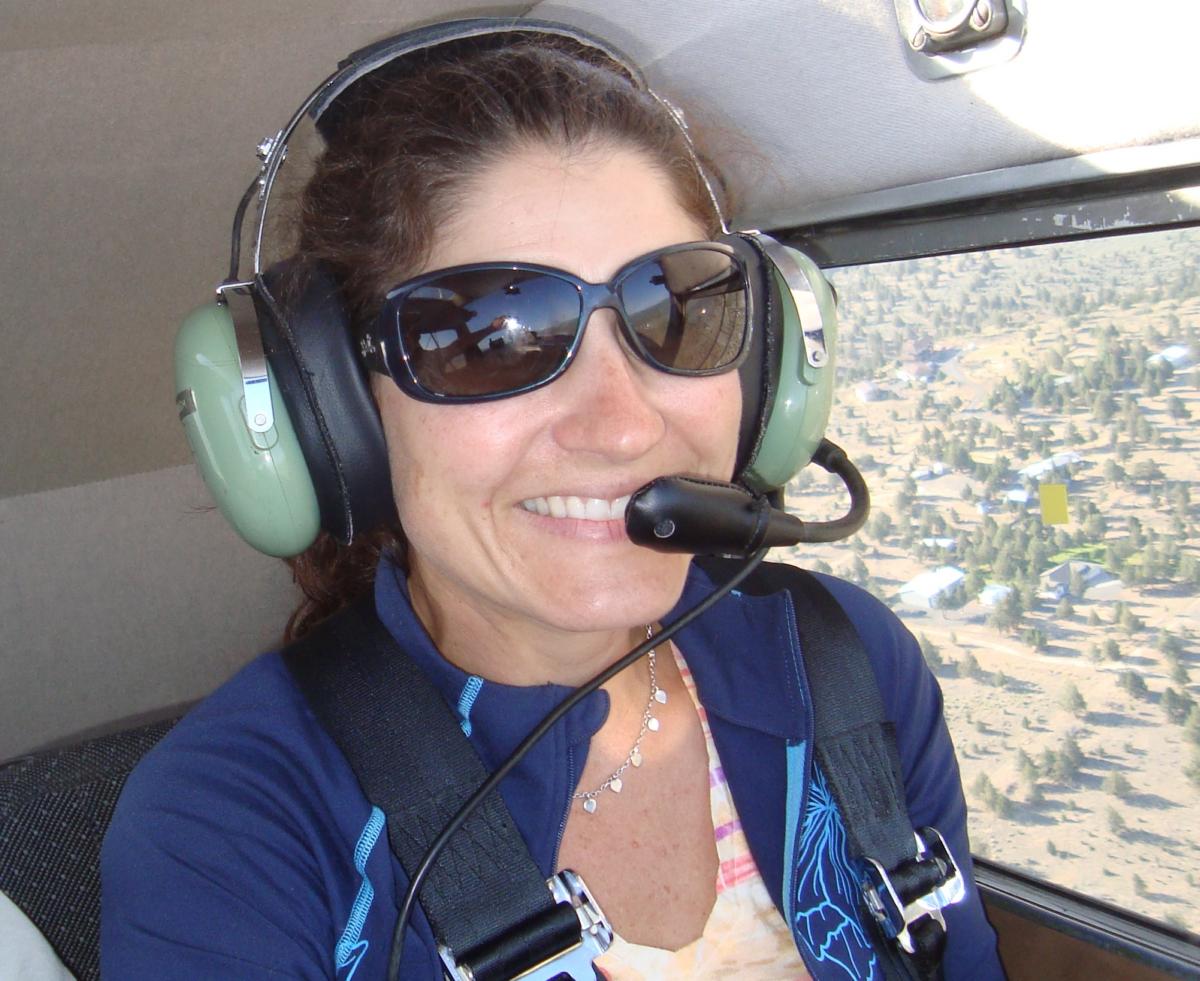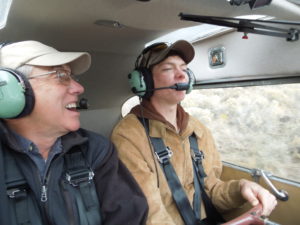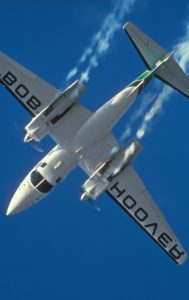I don’t believe it’s something we think about very much once we’ve accumulated a certain amount of experience. So sometimes it doesn’t occur to us to ask the new flier, “Where are you looking?”
 It may be that the most simple case of the importance of where your gaze falls is in the landing. Many new fliers are so concerned with the plane’s altitude and position, that they look at that centerline right in front of them. It doesn’t work. Have you ever tried to keep a car right next to the center line of the road as it whizzes past? If you look out your window and down at that line, you’ll be all over the place. But if you move your gaze to a point way down the highway in front of you, it will suddenly become much easier to hold your position relative to that line. For the same reason, if you’ll look beyond the end of the runway, you’ll have far more success maintaining course, heading and even altitude than you would if you focus right in front of the airplane.
It may be that the most simple case of the importance of where your gaze falls is in the landing. Many new fliers are so concerned with the plane’s altitude and position, that they look at that centerline right in front of them. It doesn’t work. Have you ever tried to keep a car right next to the center line of the road as it whizzes past? If you look out your window and down at that line, you’ll be all over the place. But if you move your gaze to a point way down the highway in front of you, it will suddenly become much easier to hold your position relative to that line. For the same reason, if you’ll look beyond the end of the runway, you’ll have far more success maintaining course, heading and even altitude than you would if you focus right in front of the airplane.
Perhaps the more advanced case of the importance of where you look is to be found in aerobatics. Every good aerobatics teacher will tell you where you should be looking at each phase of an aerobatic maneuver. Take the loop: As we pull, we watch the horizon as it disappears under the nose. Then we look to one side to see the angle that we are assuming relative to the horizon. After we reach the top of this fun maneuver and are about to come down the “backside”, we look up through the greenhouse or the canopy, the better to catch the horizon as it comes back into view so we can assume the proper pitch attitude.
When I teach the “Lazy 8”, I find that many of my students fail to look at the shape of that imaginary eight on its side which they are drawing above and below the horizon. But isn’t that where the maneuver gets its name? It should be the most important consideration in performing this maneuver.
When I teach the “Whoopee Stall” in the Cessna 140, I use the diagonal jury strut to indicate when we are at 45 degrees of pitch. We must shift our vision to that strut as we increase the pitch and as soon as we reach it, we change our focus to straight ahead and finish the maneuver. How important is this issue? Extremely. One of the best examples can be found with the steep turn. Most pilots roll into the bank and keep an eye on the altimeter and VSI. Of secondary interest to them is the view out the front. It should be the other way around. If you totally ignore the instrumentation, you can perform a perfectly acceptable steep turn with absolutely no instrument reference. Simply assume a level flight attitude and note the cowling’s relationship to the horizon. Then bring the power up and roll into the turn while maintaining that pitch attitude and “dragging the nose” across the horizon. At the end of 360 degrees of turn, you’ll be real close to the altitude at which you started. With practice, this technique can be refined and the altitude will be held even closer.
We must shift our vision to that strut as we increase the pitch and as soon as we reach it, we change our focus to straight ahead and finish the maneuver. How important is this issue? Extremely. One of the best examples can be found with the steep turn. Most pilots roll into the bank and keep an eye on the altimeter and VSI. Of secondary interest to them is the view out the front. It should be the other way around. If you totally ignore the instrumentation, you can perform a perfectly acceptable steep turn with absolutely no instrument reference. Simply assume a level flight attitude and note the cowling’s relationship to the horizon. Then bring the power up and roll into the turn while maintaining that pitch attitude and “dragging the nose” across the horizon. At the end of 360 degrees of turn, you’ll be real close to the altitude at which you started. With practice, this technique can be refined and the altitude will be held even closer.
Where you look is of such importance that one of the maneuvers in my flight training bag o’ tricks depends on it totally. “Sky Doodles” are maneuvers during which we describe figures on the horizon. We pretend that we have a forty-mile-long Walt Disney style animator’s brush dripping with India ink attached to the nose of our airplane. We use that imaginary brush to draw squares first. Half of the square is above the horizon and half below. We draw these figures using both coordinated turns and wings-level yawing moments. Once comfortable with squares we’ll draw circles or figure eights. But the shape of the figure or whether or not we’re coordinated is of little importance compared to our gaze at the sky and our manipulation of that imaginary brush to draw those figures.
Where you look can often be the detail which transforms a fumbling attempt into a polished execution of many aerial maneuvers.
So perhaps all of us should ask ourselves, “where am I looking?” no matter what maneuver we are performing. From the lowly level turn to the classic “Cuban Eight”, where we look is often the key to our success as we learn the maneuvers that will transform us from ground-pounders into fliers.
Happy Swooping!





